Hip dysplasia is a common issue that many dog owners might not fully understand.
It can affect dogs of any breed and can lead to pain and mobility problems if left untreated. Recognizing the signs early is crucial for ensuring your dog’s comfort and health.
Many owners overlook subtle symptoms of hip dysplasia, thinking the more obvious signs like limping are the only ones to watch for.
Being aware of these less noticeable symptoms can help you take action sooner and improve your dog’s quality of life over time.
1) Limping or favoring one leg
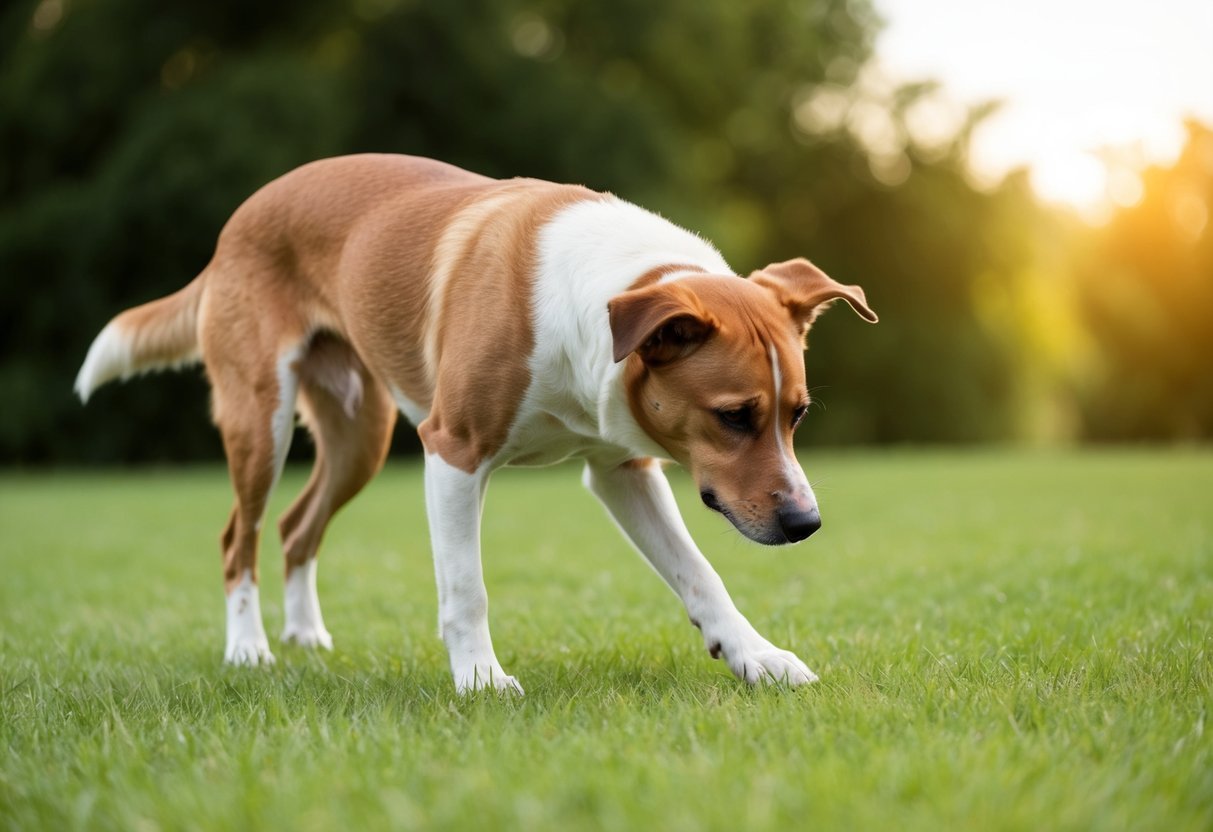
Noticing your dog limping or favoring one leg can be a clear sign of hip dysplasia.
You might see them avoid putting weight on a leg, especially after activities.
This can happen because of pain in the hip joint.
Sometimes, dogs will limp after long walks or playtime.
Pay attention if your dog is reluctant to run or jump.
They might be trying to protect their joints from further pain.
If you see your dog suddenly limping or acting differently, it’s a good idea to consult your vet.
Getting a proper diagnosis can help manage the problem early.
Early detection can lead to better treatment options.
Your dog’s comfort and mobility are important.
2) Bunny hopping during runs
If you’ve noticed your dog bunny hopping when they run, it could be a sign of hip dysplasia.
This unusual gait happens when your dog jumps forward with both hind legs together instead of running normally.
Bunny hopping can appear cute at first, but it often indicates discomfort or instability in the hips.
Dogs might do this to avoid putting too much pressure on their joints.
Watch for other signs that may accompany this behavior, like stiffness or difficulty getting up.
Dogs with hip dysplasia might also show reluctance to engage in activities they used to love.
If your dog starts bunny hopping, a visit to the vet is a good idea.
Early detection can lead to better management options, whether it’s medication, physical therapy, or other treatments.
Addressing hip dysplasia early can help keep your furry friend happy and active.
Decreased activity levels
If you notice your dog isn’t as playful or energetic as usual, it could be a sign of hip dysplasia.
Many dogs with this condition show decreased activity levels due to discomfort or pain.
Your dog might hesitate to jump or run around like they used to.
Limiting their movement often becomes a way to avoid pain.
Watch for signs like reluctance to go for walks or play with their favorite toys.
A previously active dog that seems lazy or uninterested may be struggling.
Pay attention to any changes in their behavior.
If your dog seems sluggish or limps while trying to engage in activities, it’s worth a visit to the vet.
Early diagnosis can make a big difference.
4) Reluctance to jump or climb stairs
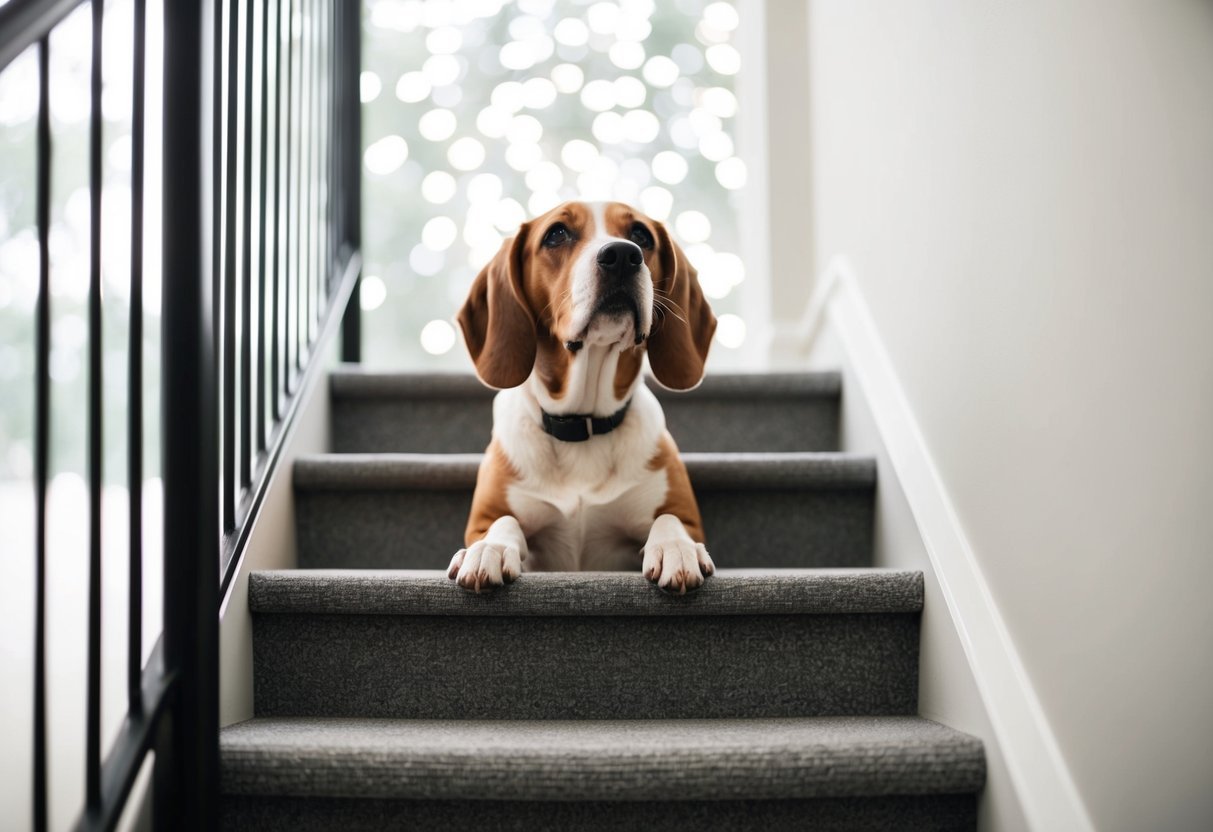
You might notice your dog hesitating to jump on the couch or climb the stairs.
This can be a clear sign of hip dysplasia.
When dogs have pain in their hips, these activities become hard and uncomfortable for them.
If your dog used to leap onto your bed but now stands at the bottom and looks up, it could mean something is wrong.
They may not want to put in the effort due to discomfort.
Climbing stairs can be especially challenging.
Dogs with hip dysplasia often struggle with the motion and may refuse to go up or down.
They might even start to whimper or act anxious when faced with stairs.
Pay attention to changes in your dog’s behavior.
If they continually avoid jumping or are slower on stairs, it’s worth a visit to the vet.
Early detection can help manage their condition better.
Understanding Hip Dysplasia in Dogs

Hip dysplasia is a common issue in dogs that affects their mobility and comfort.
It’s important to know what it is and what causes it, especially if you’re a dog owner.
What Is Hip Dysplasia?
Hip dysplasia occurs when the hip joint does not fit properly into the hip socket.
This misalignment can lead to pain and discomfort.
Over time, the condition often causes arthritis, which is a painful inflammation of the joints.
You might notice your dog having trouble getting up, limping, or being less active.
Large breeds like German Shepherds and Labradors are especially prone to this condition.
Early diagnosis can help manage the symptoms and improve your dog’s quality of life.
Causes of Hip Dysplasia
Hip dysplasia can stem from both genetic and environmental factors.
Genetic Factors:
- If the parents have hip dysplasia, the chances increase for their puppies.
Environmental Factors:
- Rapid weight gain during puppyhood can impact joint development.
- Poor nutrition, such as diets lacking in calcium, may lead to improper growth.
Aside from these, factors like exercise levels and growth rates also play roles.
Being aware of these causes can help you take preventive measures.
Regular vet check-ups can catch any signs early.
Common Misconceptions About Dog Hip Dysplasia
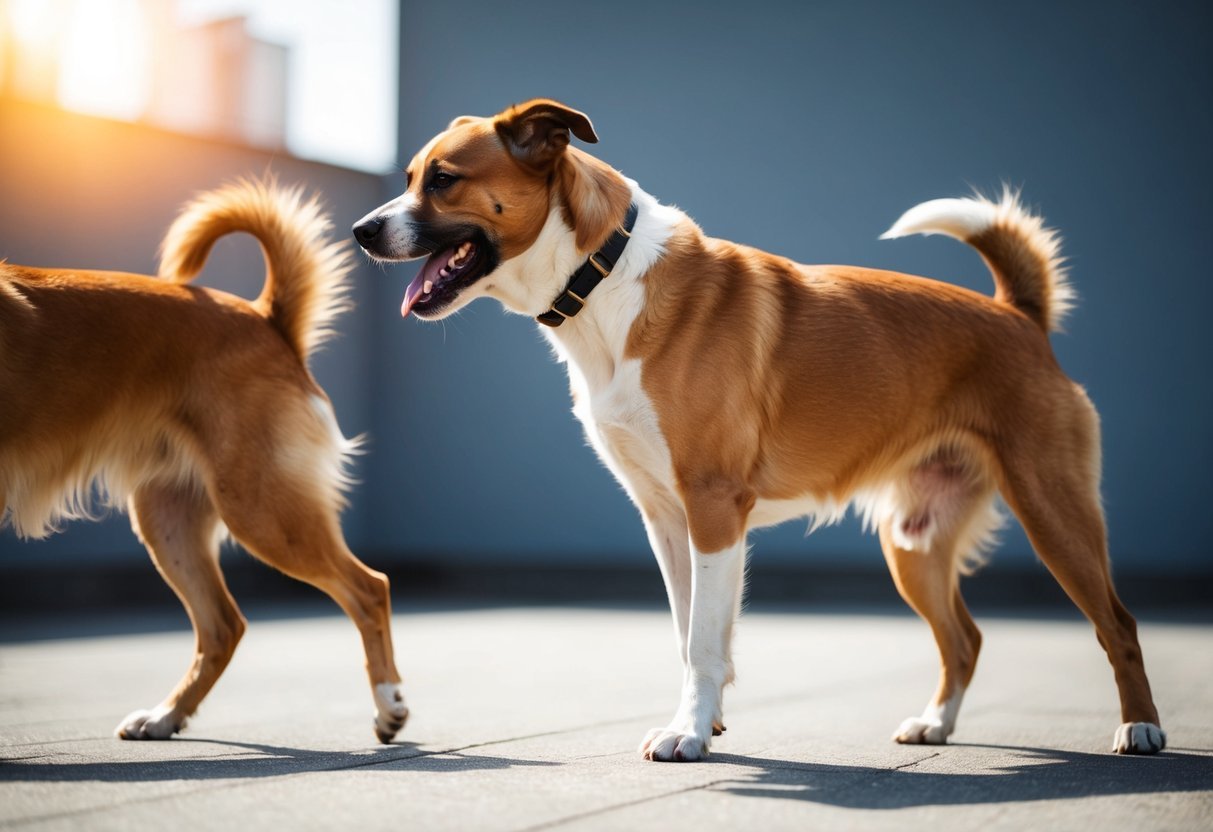
Many dog owners have misunderstandings about hip dysplasia, which can lead to improper care and management.
Let’s break down some of the most common misconceptions.
Age and Hip Dysplasia
A common belief is that hip dysplasia only affects older dogs.
In reality, this condition can start in puppies.
While the symptoms may not appear until later in life, the underlying issues can develop during growth.
Larger breeds, like Great Danes and Labradors, are more prone to hip dysplasia.
This is often due to rapid growth, which can stress the hip joint.
Early screening is helpful, even for younger dogs.
Regular vet check-ups can catch problems sooner rather than later.
So, don’t wait until your dog is older to check for hip dysplasia.
Being proactive can help manage this condition effectively.
Activity Levels in Affected Dogs
Another misconception is that dogs with hip dysplasia should avoid exercise entirely.
While it sounds reasonable, avoiding activity can actually harm your dog’s health.
Instead, low-impact exercise is crucial.
Gentle walks and swimming are great options.
These activities help maintain muscle strength without stressing the joints.
Remember, dogs have different pain thresholds.
Some may appear fine while experiencing discomfort.
Monitoring your dog’s movements is key.
Look for signs of pain or reluctance to play.
Adjusting their activity levels can keep them happy and healthy.
When to Consult Your Vet
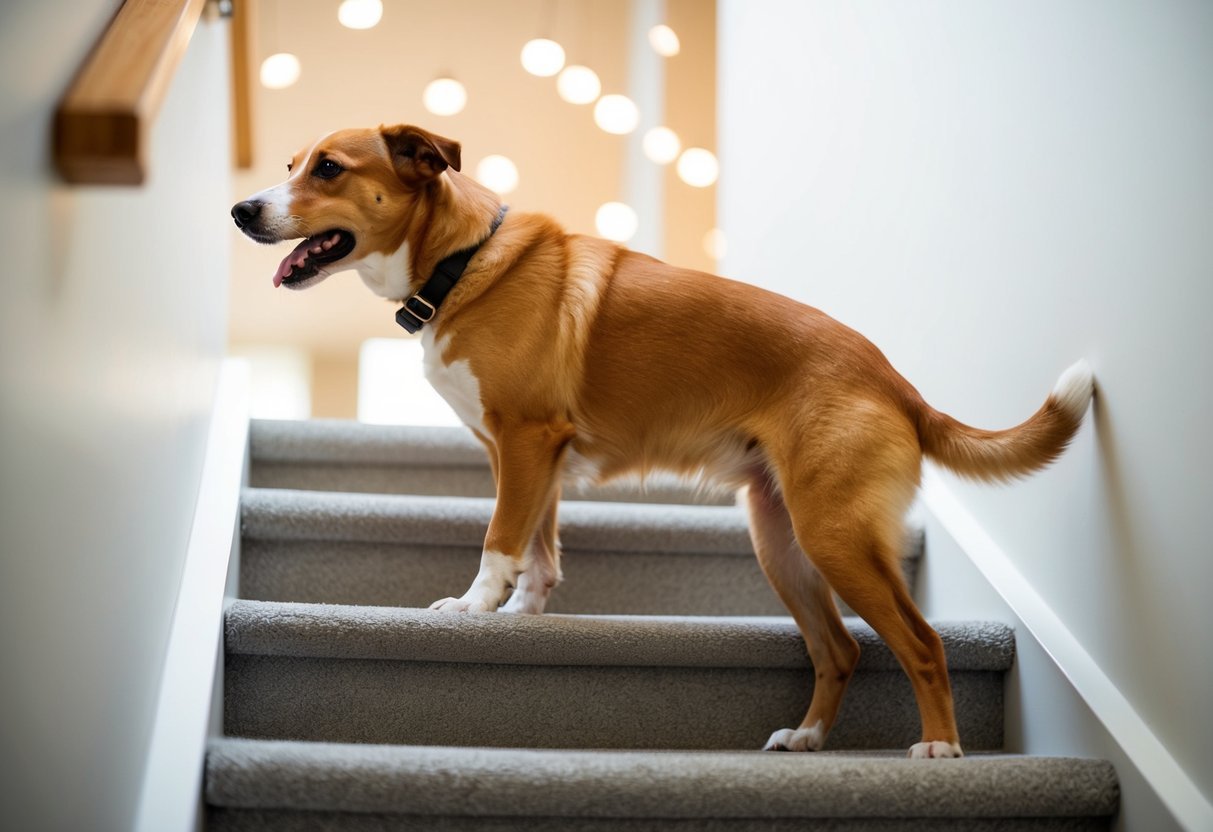
If you notice any signs of hip dysplasia in your dog, it’s important to consult your veterinarian.
Here are some key times to make that call:
-
Limping or Favoring a Leg: If your dog is limping or seems to favor one leg, it may indicate discomfort. Don’t wait too long to ask for help.
-
Difficulty with Movement: If your dog struggles to get up, lie down, or climb stairs, this could be a sign of hip issues. A vet visit can clarify what’s going on.
-
Changes in Behavior: If your dog becomes less active or plays less, it might be in pain. Changes in behavior can often point to underlying health issues.
-
Unexplained Weight Changes: If your dog is losing weight or gains weight quickly, consult your vet. Unintended weight changes can affect joint health and mobility.
Remember, early detection is key to managing hip dysplasia effectively.
Your vet can recommend treatments or lifestyle changes to help your dog feel better.
It’s always better to be safe and get a professional opinion when it comes to your furry friend’s health.
Frequently Asked Questions
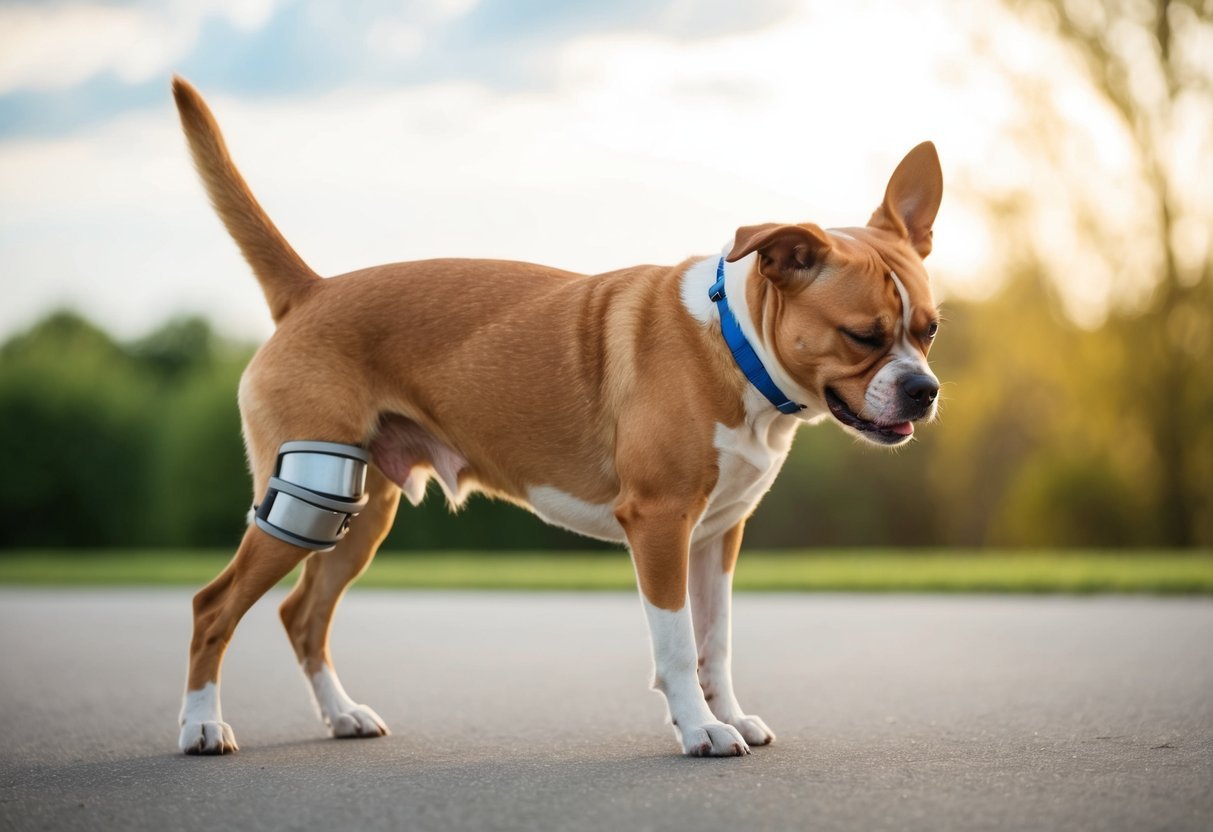
Many dog owners have questions about hip dysplasia, especially when it comes to recognizing signs and symptoms.
Understanding this condition can help you provide better care for your furry friend.
What are the initial warning signs of hip dysplasia in pups?
Look for signs like limping or favoring one leg.
Puppies may also seem less active than usual.
Behaviors like reluctance to climb stairs or jump can also be early indicators.
How can hip dysplasia be treated at home for my dog?
You can manage mild cases with weight control and low-impact exercises.
Providing a comfortable and supportive bed may also help.
Some owners find success with joint supplements and anti-inflammatory medications as recommended by a vet.
Are there different stages of hip dysplasia I should look out for in my dog?
Yes, hip dysplasia can progress from mild to severe.
Early stages might show minimal symptoms, while later stages can lead to more noticeable pain and mobility issues.
Regular vet check-ups can help monitor changes.
What might be confused with hip dysplasia symptoms in dogs?
Symptoms like limping could be mistaken for strains or arthritis.
Other conditions, such as ligament injuries, can also show similar signs.
Always consult a vet for an accurate diagnosis.
Can you tell me the main reasons my dog might develop hip dysplasia?
Hip dysplasia is often genetic, especially in certain breeds.
Other factors include rapid growth, obesity, and lack of exercise during puppyhood.
It’s crucial to know your dog’s breed and family history.
What’s likely to happen if my dog’s hip dysplasia goes unnoticed?
If you leave hip dysplasia untreated, it can lead to chronic pain and arthritis.
Your dog may have a reduced quality of life and struggle with everyday activities.
Early detection is key to managing this condition effectively.

